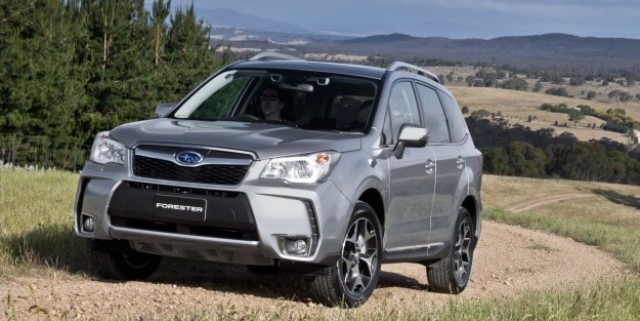
It would seem Subaru has matured nicely as the marque celebrates its 40th anniversary in Australia – the launch of the new Subaru Forester XT is distinguished by the fact that, for the first time, the Forester turbo doesn’t get a boy-racer bonnet scoop.
Not only has the trademark scoop been ditched, so too has the manual transmission.
Subaru will offer the new Forester 2.0 XT and 2.0 XT Premium models exclusively with a continuously variable transmission.
The fourth-generation Subaru Forester XT also follows the downsizing trend when it comes to engine displacement, moving from a turbocharged 2.5-litre engine on the previous generation to an all-new direct-injected turbocharged 2.0-litre unit.
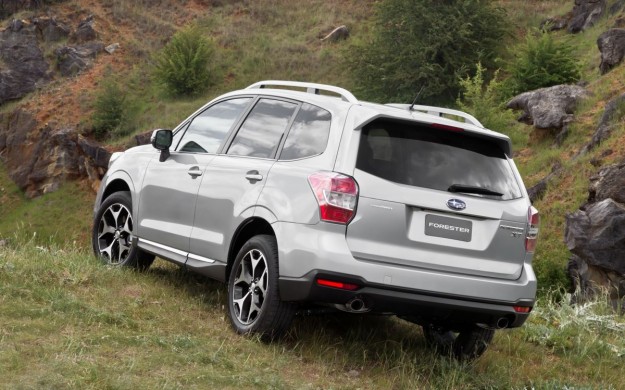
Despite the adoption of a smaller engine, power and torque have increased from 169kW and 320Nm, to 177kW and 350Nm with the new car. Performance has also improved, the new-generation Forester XT able to sprint from 0-100km/h in 7.5 seconds (down from 7.9 on the previous XT auto).
As the range-topping, performance-focused model, you may expect the new-generation Forester XT to better distinguish itself from its Forester siblings, particularly given the decision to delete the all-telling bonnet scoop.
But apart from ‘XT’ badging and some cosmetic work around the grille, it looks pretty much the same as the other Forester variants.
Inside, the $43,490 Forester XT gets including sports pedals, electric sunroof and dual-zone climate-control. Disappointingly, however, buyers need to spend a hefty $50,490 for the Forester XT Premium to get satellite navigation, and basics such as auto headlamps and rain-sensing wipers. The Premium also adds push button start with keyless entry, power tailgate, and Harman Kardon sound system.
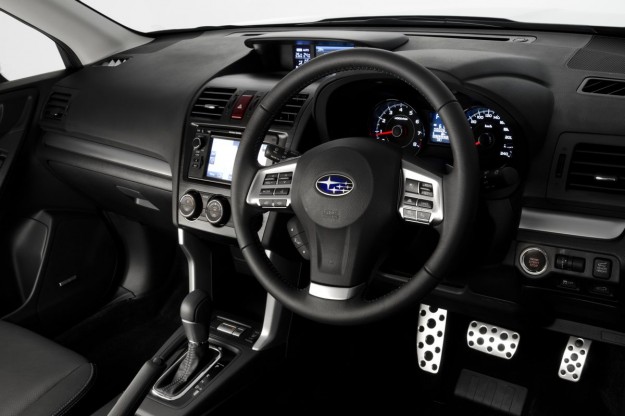
On the road it doesn’t take long to be impressed by the new Forester XT’s downsized engine and CVT.
We were mildly sceptical about the switch from an automatic transmission to a constantly variable unit, but the new 2.0-litre turbocharged engine mated with Subaru’s Lineartronic CVT is a cracker of a marriage.
Working in-sync with the powertrain is SI-Drive – derived from the Liberty, it features across the new Forester range. The system, activated via a switch on the steering wheel, allows drivers to select a range of engine and transmission settings in three modes: Intelligent (I), Sport (S) and Sport-sharp (only on the XT).
We kicked off in the Intelligent setting, which provided a smooth, but tempered power delivery. However, if you need to move quickly, throttle response and torque from the Forester XT in this mode is more than adequate – even for freeway-speed overtaking.
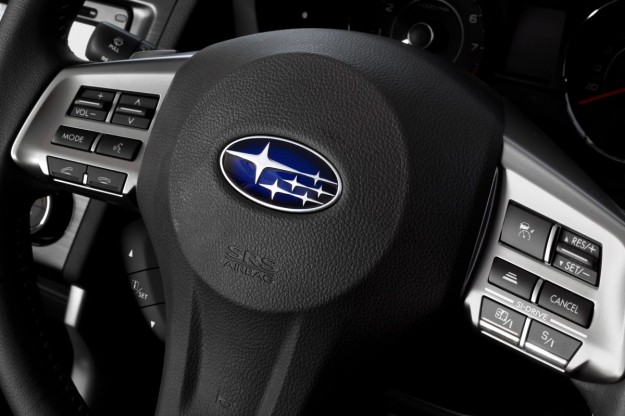
Switching to Sport-sharp mode and using the steering wheel-mounted paddle shifters not only delivers more immediate accelerator response, but also employs an eight-step gear selection that feels similar to a traditional manual transmission.
It’s an intuitive system, slurring from eighth to sixth with the slightest dab on the throttle from a steady cruising speed, and from sixth to third under full throttle.
More importantly, the shifts are smooth and the engine is superbly refined and quiet. Even when driving spiritedly, using the engine to maximum potential, you’ll be hard-pressed picking what rpm you’re at – such is the level of noise insulation in the Forester XT.
That’s something we didn’t anticipate from the reduced engine capacity and CVT combination.
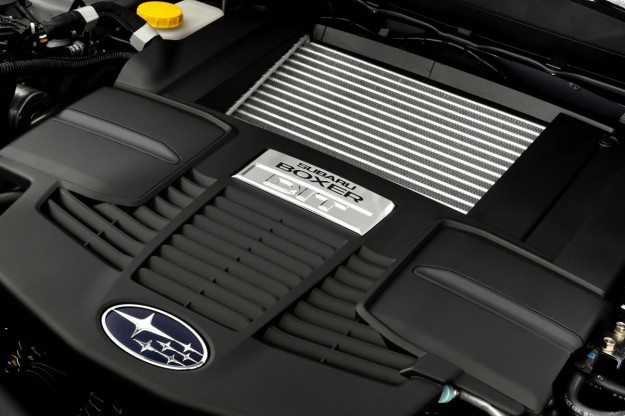
Despite the all-new Subaru Forester XT sporting a twin-scroll turbocharger for a quicker throttle response, there’s still some turbo lag in the Intelligent mode, but it’s minimal in the Sport sharp setting even under heavy throttle loads from a standing start.
Equally impressive is the XT’s chassis both on-road and off-road. Subaru has stiffened the Forster’s rear sub-frame and increased spring rate, however the new Forester range is heavier than it’s predecessor – by up to 104kg, largely due to added technology.
So the XT leans into a corner when pushed, and is definitely understeer-biased, but it doesn’t affect its ability to confidently negotiate a corner.
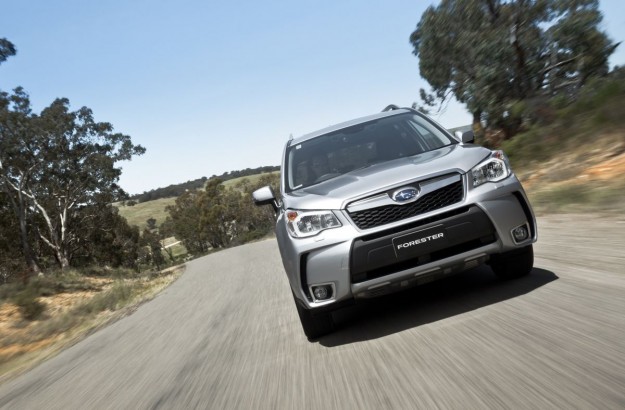
Not so good are the driver and front passenger seats in the XT. They’re not sufficiently bolstered, which allows too much (driver) body movement in the bends.
Ride quality though, is very good, especially over undulating roads pockmarked with depressions and bumps.
There’s enough compliance in the suspension to provide a cushioned ride over most surfaces, while the car maintains excellent composure and straight-line tracking.
Subaru employs electric power steering across the entire Forester range and while it’s reasonably quick and there’s some driver feedback, it’s quite lightly weighted for a performance variant.
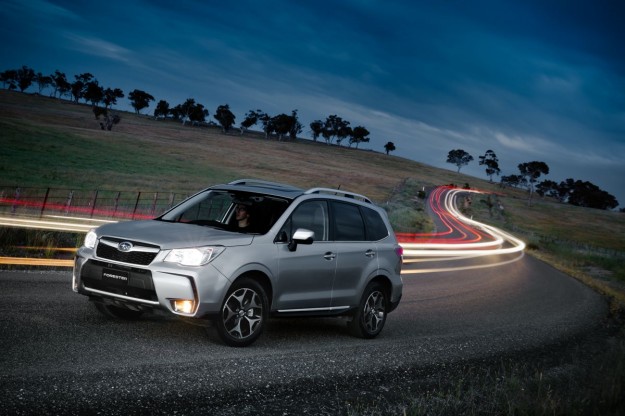
The new Forester XT also gets a brake upgrade, with front and rear ventilated discs now standard. Previously a Forester sore point, the brakes provide good response and progressive brake force.
With several dirt-road sections on our test route, we also tried out Subaru’s new computer-controlled off-road driving mode known as X-Mode – a standard feature activated by pressing a button on the centre console.
The system manages control of the engine, all-wheel-drive distribution, brake application and the vehicle’s active safety systems to maximise traction over slippery surfaces.
Off-road, the Subaru Forester XT displayed similar levels of composure and surefootedness across extremely dry tracks littered with loose stones.
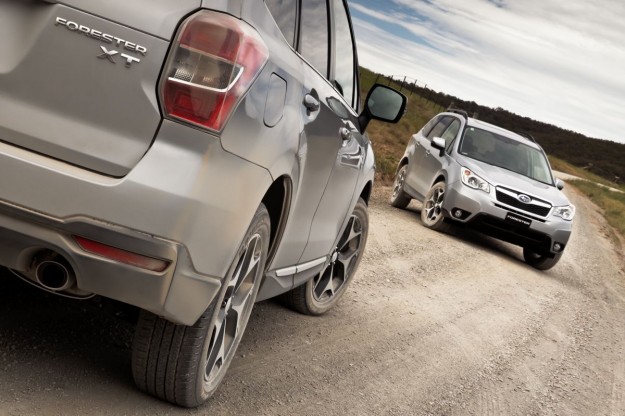
Towing capacity for the new Forester range has also increased to 1500kg for non-turbo models and 1800kg for the Forester XT as a result of research that indicated 35 per cent of all Forester owners use the vehicle to tow.
Fuel consumption has also fallen from 10.5L/100km on the outgoing Forester XT to a claimed 8.5L/100km, although on our test run over several hundred kilometres we managed 9.8L/100km.
Subaru’s EyeSight driver assist system also debuts on the XT Premium version. The technology uses stereo cameras with 3D image processing to reduce the potential of frontal collisions, lane drifting and low-speed impacts.
The lane departure warning system is certainly effective, beeping (perhaps a little too frequently) while travelling along curvy rural roads when you may graze the white lines.
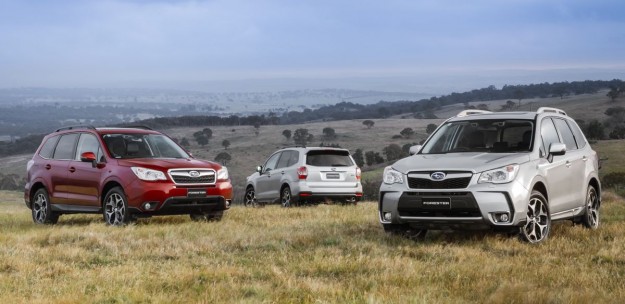
With the fourth-generation Forester XT, Subaru has produced a significantly more polished (and faster) version of the marque’s best selling model. Almost every facet of the Forester has been improved, from performance and fuel economy to space, safety equipment and dynamics.
In a four-decade run that has seen Subaru shift an impressive 620,000 cars to Aussie drivers, the best-selling Forester is a fitting model to mark the celebrations in 2013.
It’s just a shame it had to grow up – we’re going to miss that boy-racer bonnet scoop.





